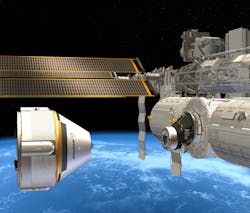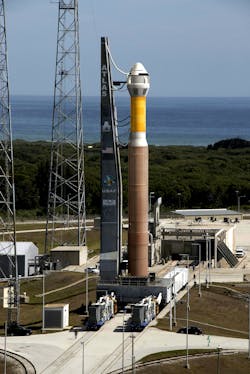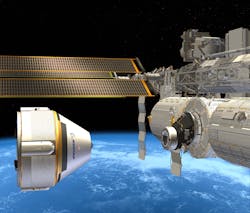Boeing completes preliminary design review for connection between CST-100 spacecraft and rocket
This event marks third milestone under Boeing’s Commercial Crew Integrated Capability (CCiCap) agreement with NASA that Boeing personnel have achieved on schedule. The achievement also means detailed engineering of the structure, called the Launch Vehicle Adapter, can begin. The first two CST-100 test flights are expected to take place as early as 2016.
“This review was an outstanding integrated effort by the Boeing, ULA, and NASA teams,” explains John Mulholland, vice president and program manager of Boeing Commercial Crew Programs. “It sets the baseline for us to proceed to wind tunnel testing and the launch segment review in June.”
Boeing completed two CCiCap milestones earlier this year: the Engineering Release 2.0 software release, which lays the groundwork for spacecraft control and communications, and the Landing & Recovery Ground Systems and Ground Communications design review, which establishes a plan for the equipment and infrastructure needed for ground communications and landing and recovery operations.
Boeing's Commercial Crew Program includes the design, manufacture, test and evaluation, and demonstration of an integrated Commercial Crew Transportation System–comprised of the CST-100 spacecraft, launch vehicle, and ground and mission operations–for NASA's Commercial Crew Development program. The Boeing system will provide crewed flights to the International Space Station and also support the Bigelow Aerospace orbital space complex.
The Boeing Company of Houston, a NASA Commercial Crew Program (CCP) partner, has completed a preliminary design review (PDR) of the component that would connect the company's new crew capsule to its rocket.
The review is one of six performance milestones Boeing has completed for NASA's Commercial Crew Integrated Capability (CCiCap) initiative, which is intended to make available commercial human spaceflight services for government and commercial customers. The company is on track to complete all 19 of its milestones during CCiCap.
The PDR was a culmination of early development and preliminary analysis to demonstrate the design is ready to proceed with detailed engineering.



